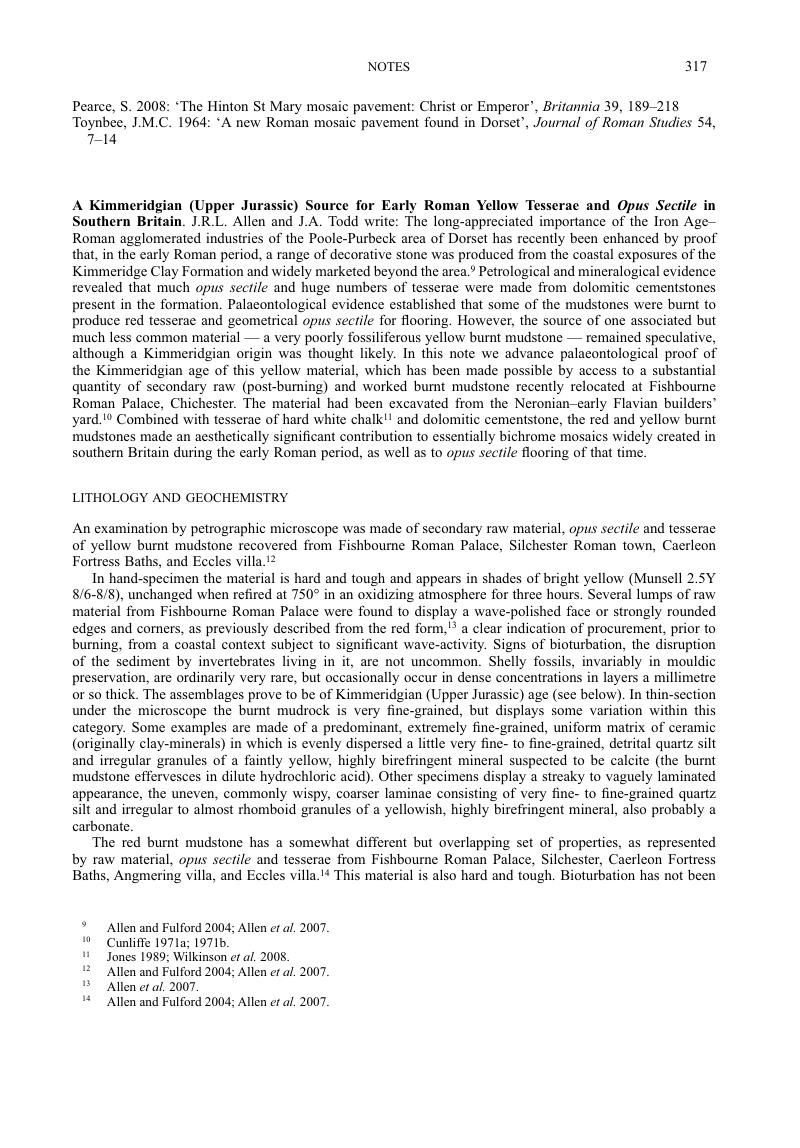Crossref Citations
This article has been cited by the following publications. This list is generated based on data provided by Crossref.
Tasker, A.
Wilkinson, I.P.
and
Williams, M.
2017.
The Archaeological and Forensic Applications of Microfossils: A Deeper Understanding of Human History.
p.
221.
Shi, John Z
2022.
John Robert Lawrence Allen FRS, FSA (25 October 1932–18 October 2020): a personal tribute.
Geological Magazine,
Vol. 159,
Issue. 3,
p.
293.
Nikolić, Emilija
Delić-Nikolić, Ivana
Jovičić, Mladen
Miličić, Ljiljana
and
Mijatović, Nevenka
2023.
Recycling and Reuse of Building Materials in a Historical Landscape—Viminacium Natural Brick (Serbia).
Sustainability,
Vol. 15,
Issue. 3,
p.
2824.



